

Southern Wall
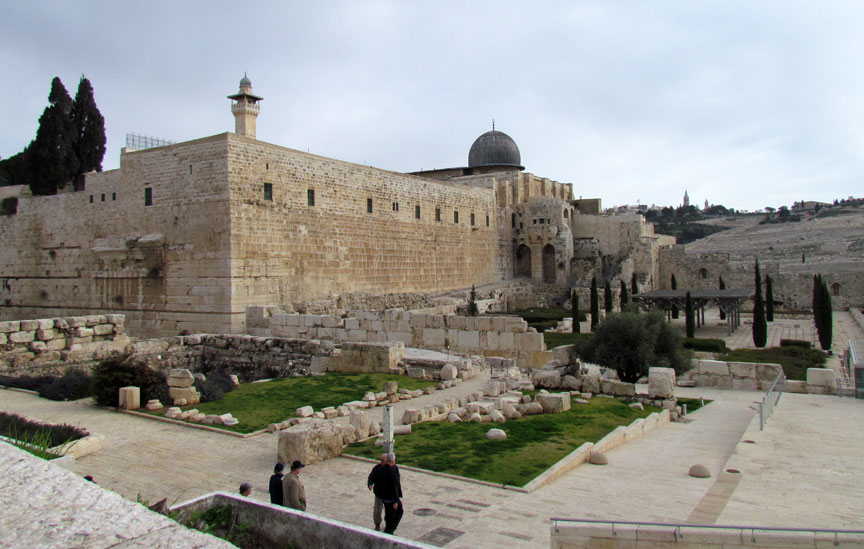
southern end of the Temple Mount
The Southern Wall is a wall at the southern end of the Temple Mount and the former southern side of the Second Temple in Jerusalem. It was built during King Herod's expansion of the Temple Mount platform southward on to the Ophel.

The Southern Wall is 922 feet in length. Herod's southern extension of the
Temple Mount is clearly visible from the east, standing on the Mount of Olives
or to a visitor standing on top of the Temple mount as a slight change in the
plane of the eastern wall, the so-called "Straight Joint." Herod's Royal Stoa
stood atop this southern extension. The enormous retaining wall is built of
enormous blocks of Jerusalem stone, the face of each Ashlar (block) is edged
with a margin, the boss is raised about 3/8" above the surrounding margins. The
unmortared blocks are so finely fitted together that a knife blade cannot be
inserted between the Ashlars.
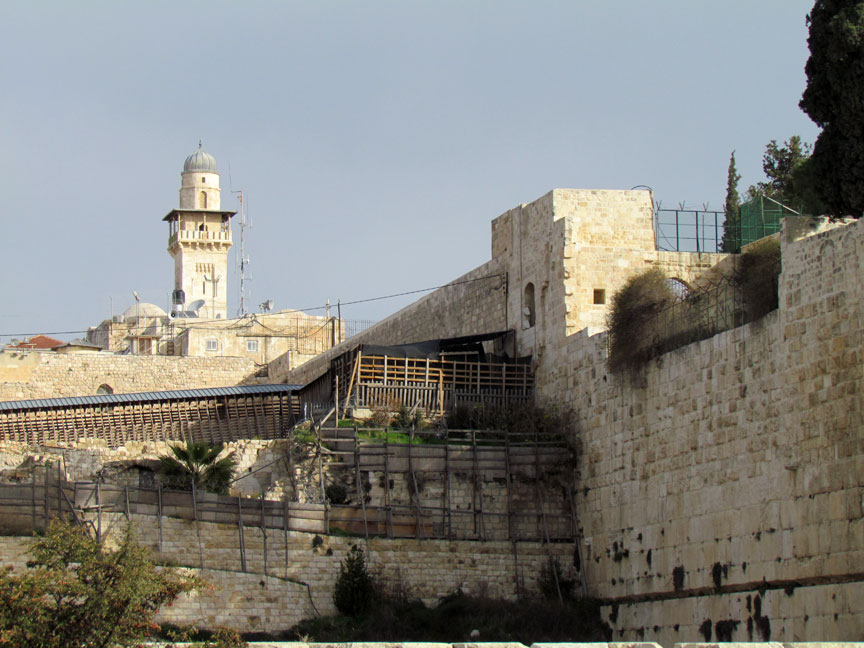
entrance to the Dome of the Rock
An enormous flight of steps leads to the Southern Wall from the south. They were excavated after 1967 by archaeologist Benjamin Mazar and are the northernmost extension of the Jerusalem pilgrim road leading from the Pool of Siloam to the Temple Mount via the Double Gate and the Triple Gate, collectively called the Huldah Gates. These are the steps that Jesus of Nazareth and other Jews of his era walked up to approach the Temple, especially on the great pilgrimage festivals of Passover, Shavuot and Sukkot. The stairs that lead to the double gate are intact and "well-preserved." The steps that lead to the triple gate were mostly destroyed. The risers are low, a mere 7 to 10 inches high, and each step is 12 to 35 inches deep, forcing the ascending pilgrims to walk with a stately, deliberate tread. The pilgrims entered the temple precincts through the double and triple gates still visible in the Southern Wall. Together, the double and triple gates are known as the Hulda Gates, after the prophetess Huldah.
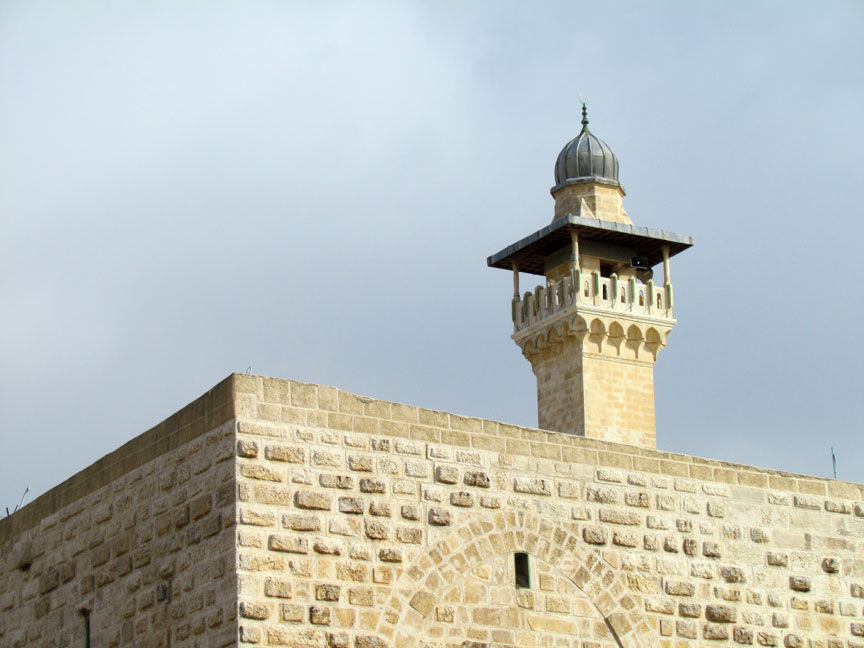
The present iteration of the Triple Gates is not Herodian. The only Herodian
element visible form the outside is the door-jamb on the bottom of the left-hand
arch. The Double Gate is substantially concealed by a Crusader-era addition to
the Temple Mount. Only half of the right-hand arch of the double gate is visible
today from the outside. Over the part of the right-hand Herodian arched
doorway that is visible is an ornate, decorative half-arch dating to the Umayyad
period (661–750 CE). Just above it, the stub of an Herodian relieving arch is
visible.
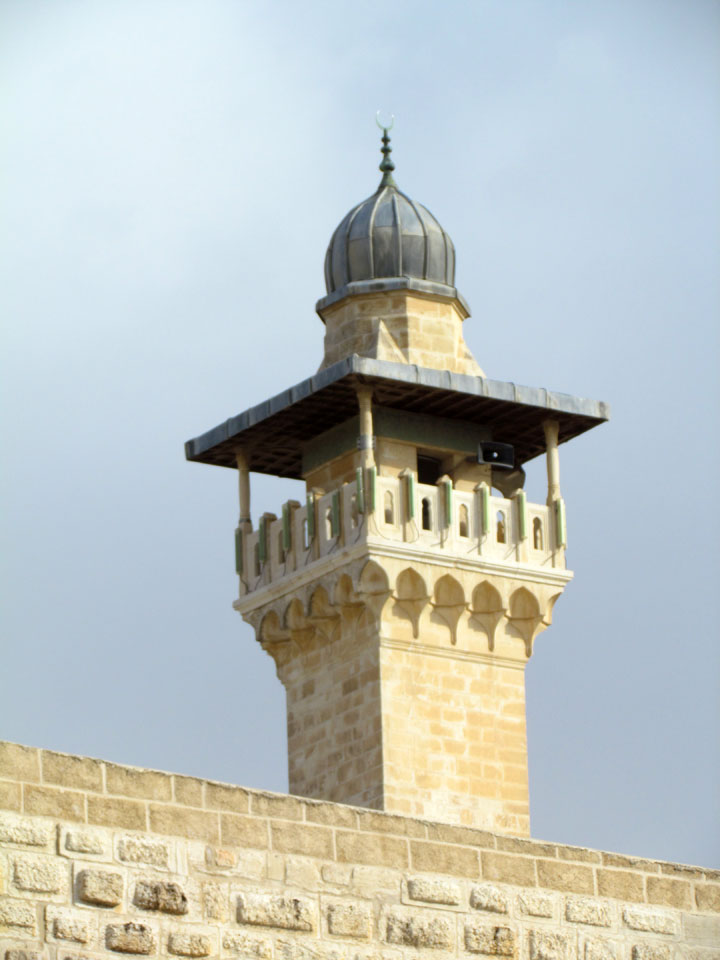
Inside the Temple Mount, much of the original staircase and the arched,
elaborately carved Herodian ceilings survive. According to archeologist Meir
Ben-Dov, "On his way in and out of the Temple, Jesus must have walked here."
Ben-Dov recalls that he was once asked by Neil Armstrong, the American
astronaut, to show him an area in Jerusalem where Jesus might have walked. Ben-Dov
took him inside the Hulda Gates in the Southern Wall and Armstrong said that he
was just as thrilled to stand on this staircase as he had been when he took his
first steps on the moon.
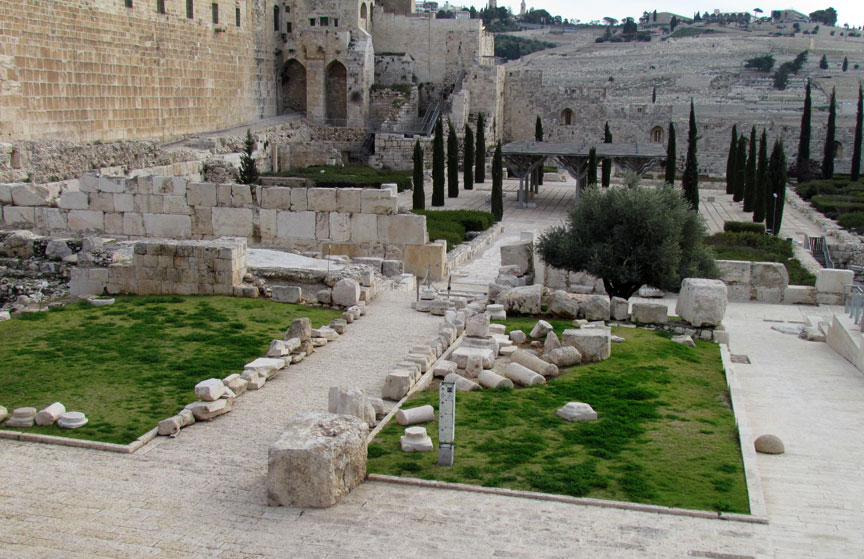
The domed ceilings of the great staircases are carved with elaborate floral and
geometric designs. The internal parts of the Herodian Double Gate survive,
although the waqf rarely permits visitors to see it. Unlike the austere exterior
gate, the interior of the gateway is elaborately decorated with ornately carved
columns an ornamented domes. Two pairs of domes and their elaborate, surrounding
columns survive intact. Intricately carved vines, rosettes, flowers and
geometric patterns cover "every inch" of the "impressive" entry to the ancient
Temple.

In a post-1967 dig led by archaeologists Benjamin Mazar and Meir Ben-Dov, it was
discovered that the Hulda gates led into a grand staircase and served as the
principal entrance to the temple in the Roman period.

said to be where Mohammad tied his horse
During the post-1967 digs, an elaborate group of Umayyad administration buildings and palaces were uncovered just outside the Southern Wall. They have been carefully preserved and are now part of an archaeological park. The Umayyad Caliphate is understood to have repaired damage to the Huldah Gates and Pilgrim stairs caused by the Roman destruction of Jerusalem in the year 70, in order to use them for access to the newly built Dome of the Rock.

Western Wall
In the early 21st century, a new bulge was noticed in the Southern Wall, threatening the structural integrity of the masonry. Unauthorized underground construction of the el-Marwani Mosque was cited as the probable cause. In a compromise between Israel, the Palestinian Authority and the Muslm Waqf that manages the property, it was decided that Jordan would manage the repairs. The Jordanian repair, visible as a bright, white patch in the photo above, has been criticized as a "unsightly", an "eyesore", and a "terrible job" because it is out of keeping with the common practices of historical restoration in being of a lighter color and smoother surface than the original stone. The Jordanian repair crew also left two construction scaffolds hanging over the edge of the wall.
Text from Wikipedia
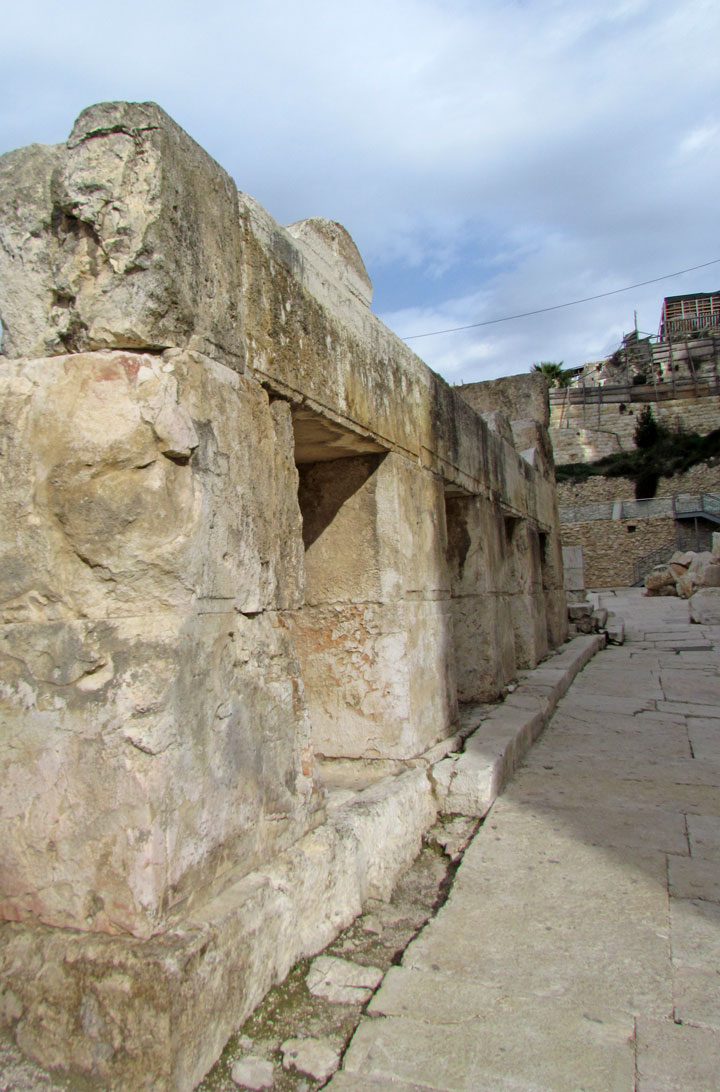


trumpeter inscription
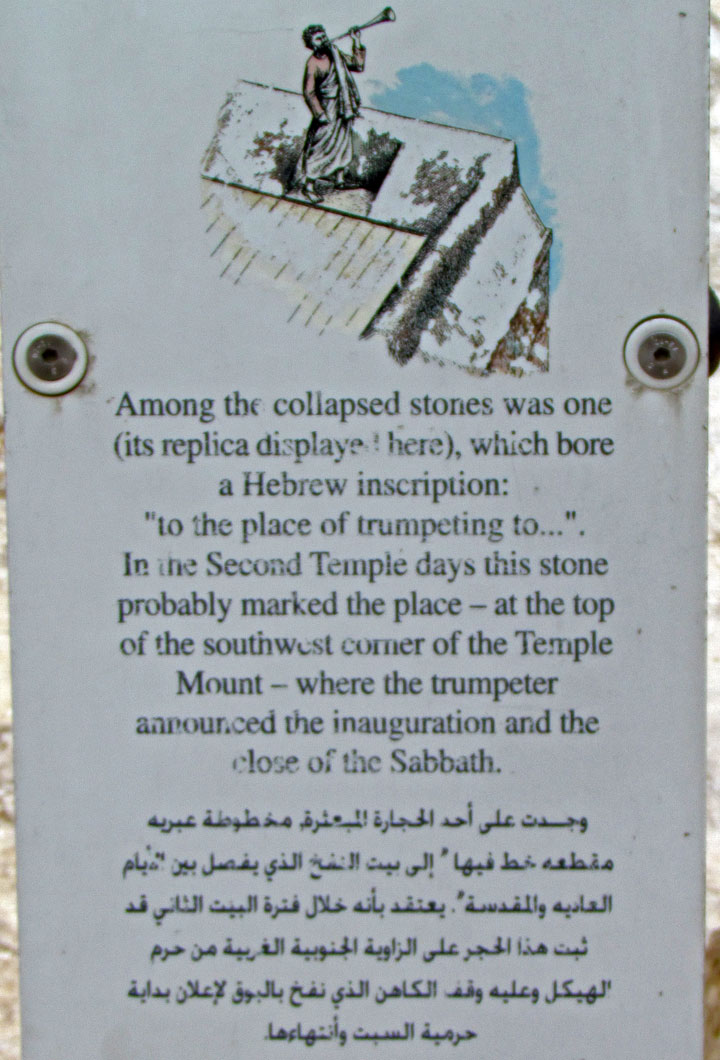

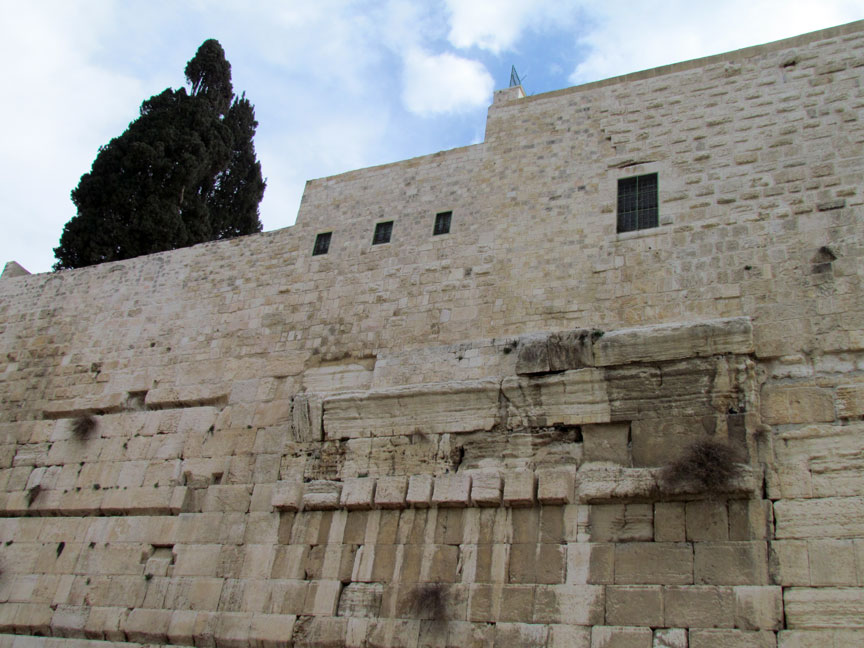
anchor of the great arch
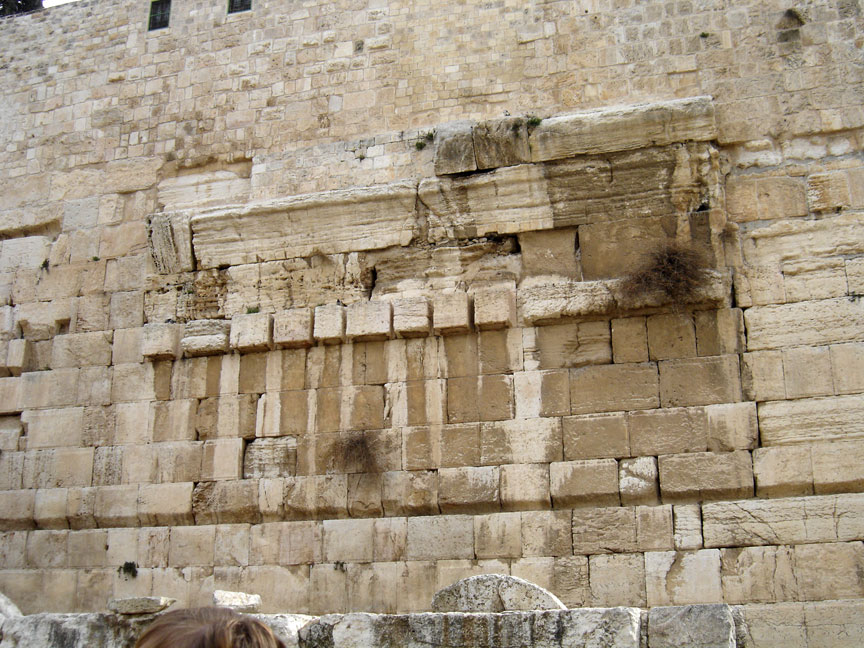
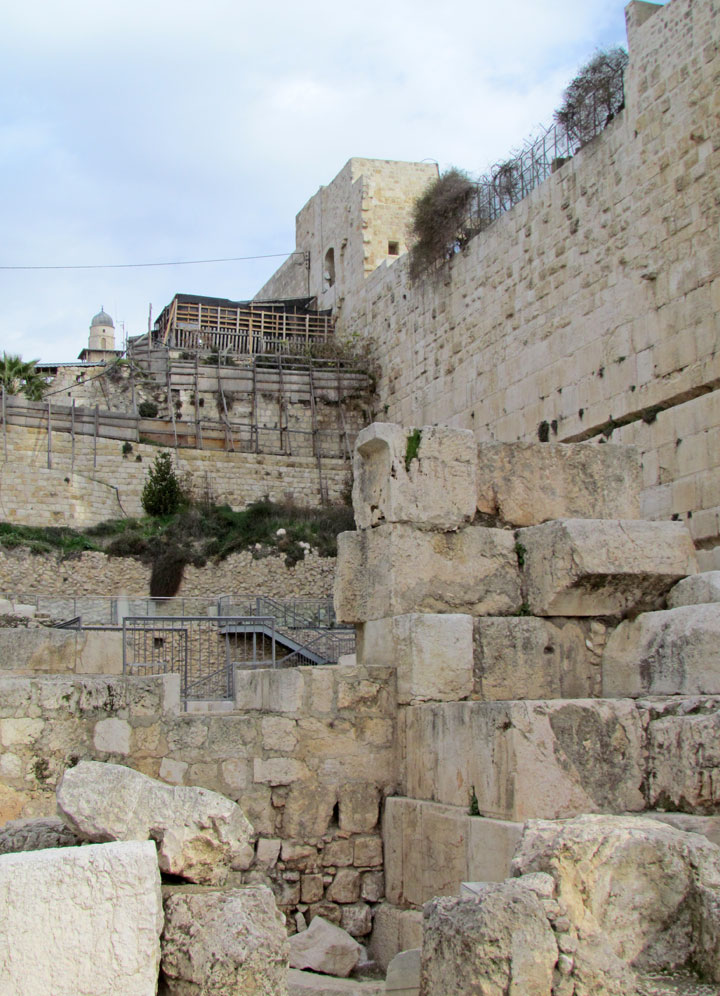
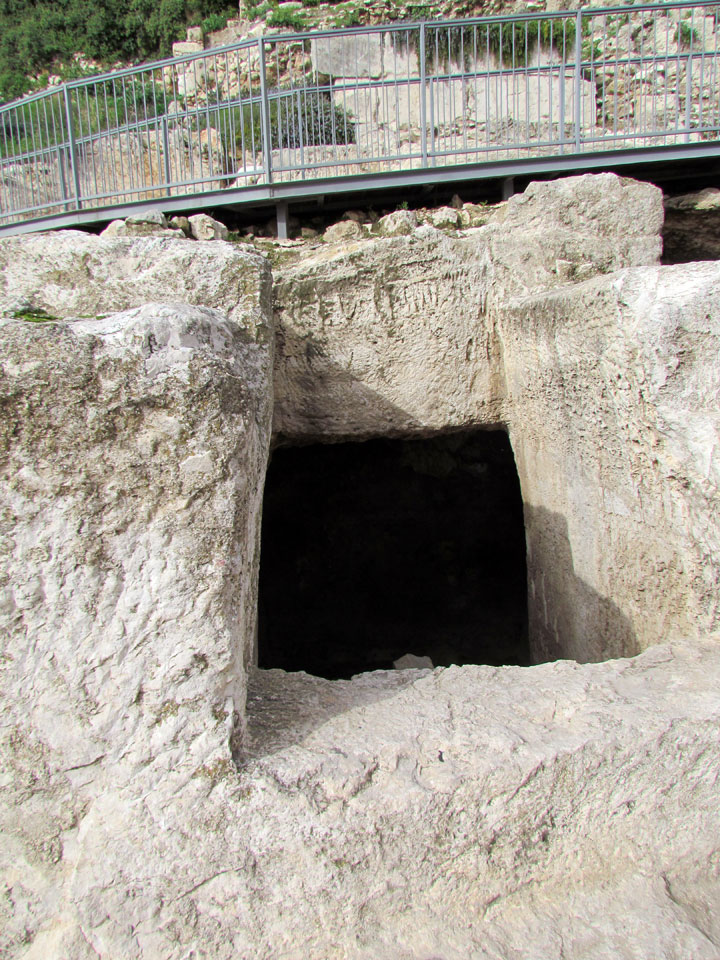
ritual bath
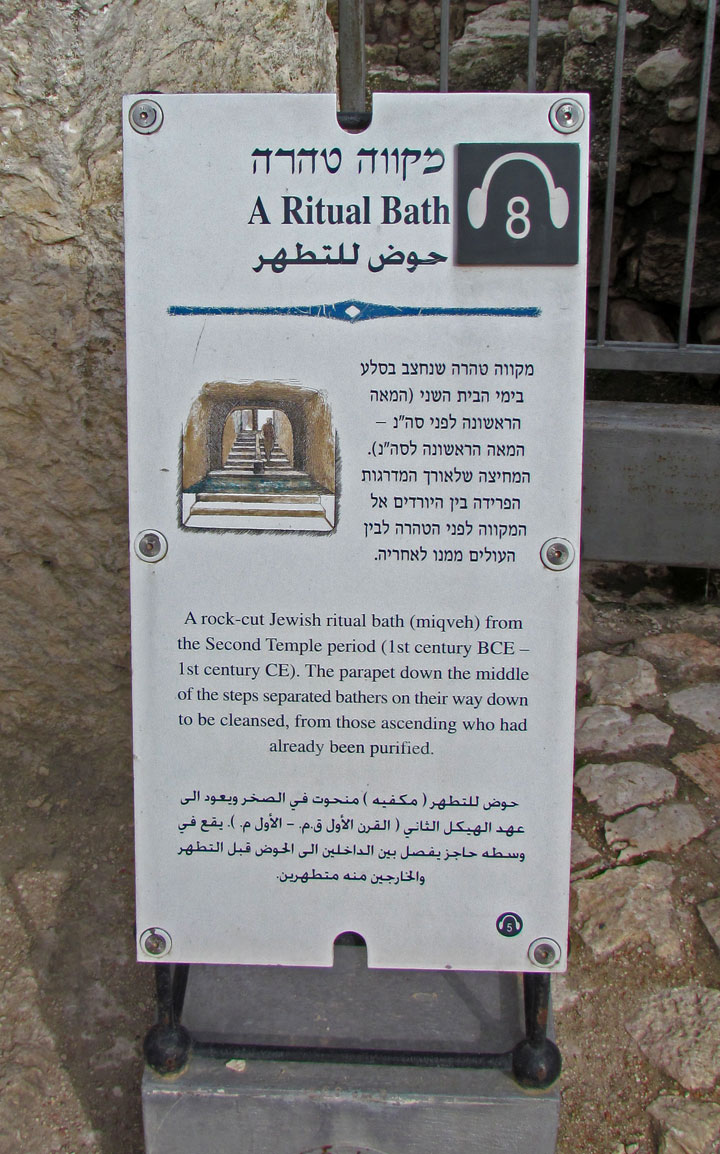
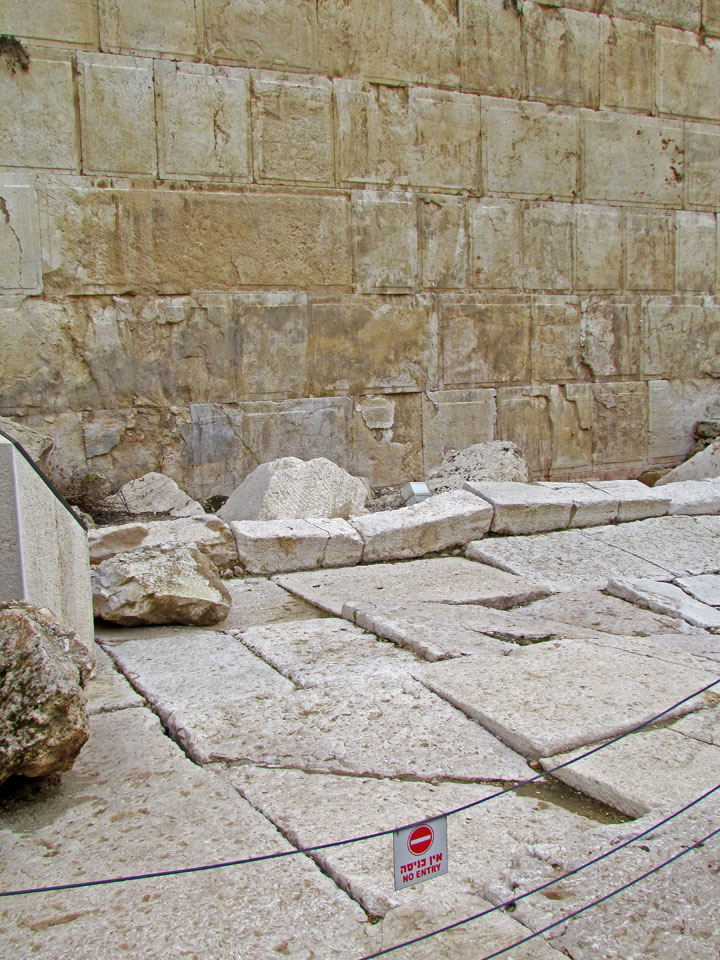
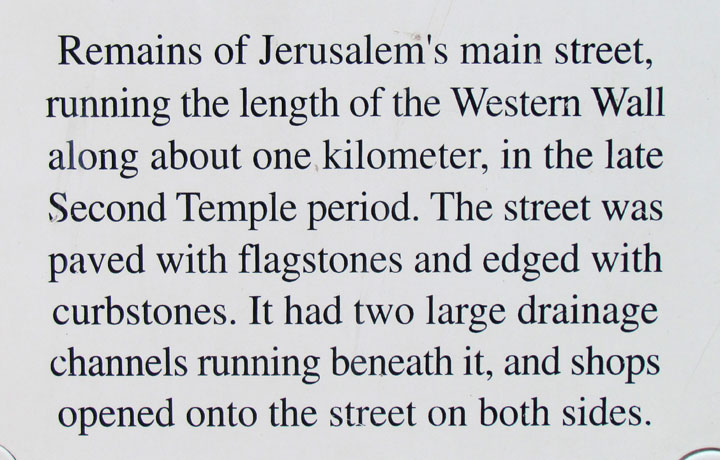

flagstone
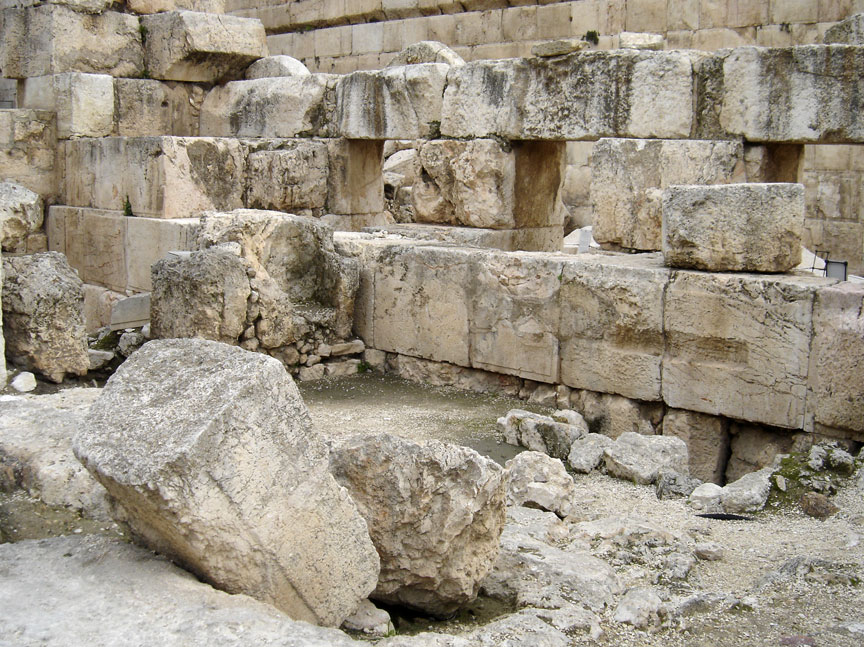
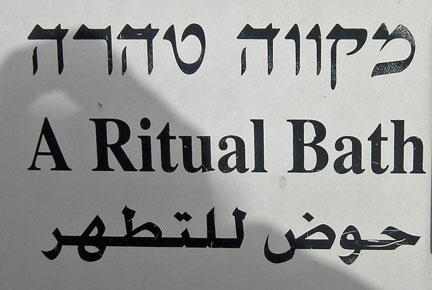
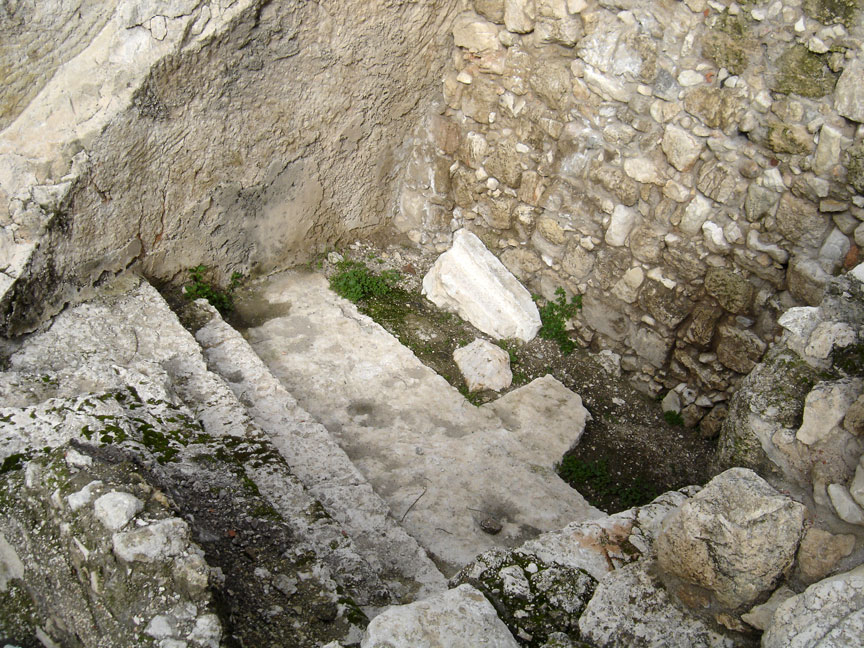
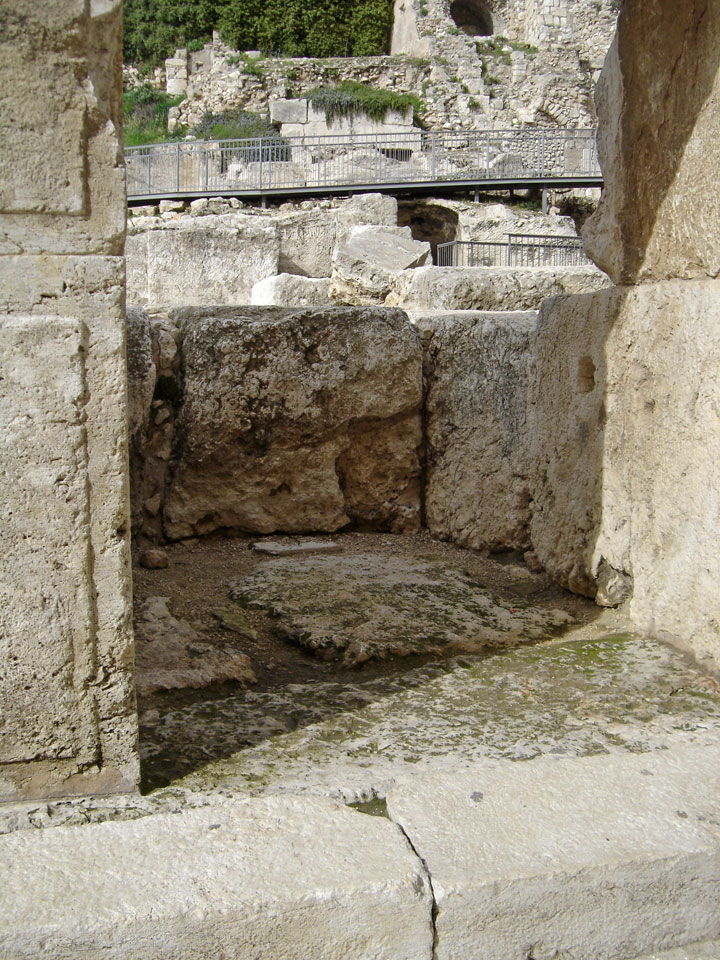


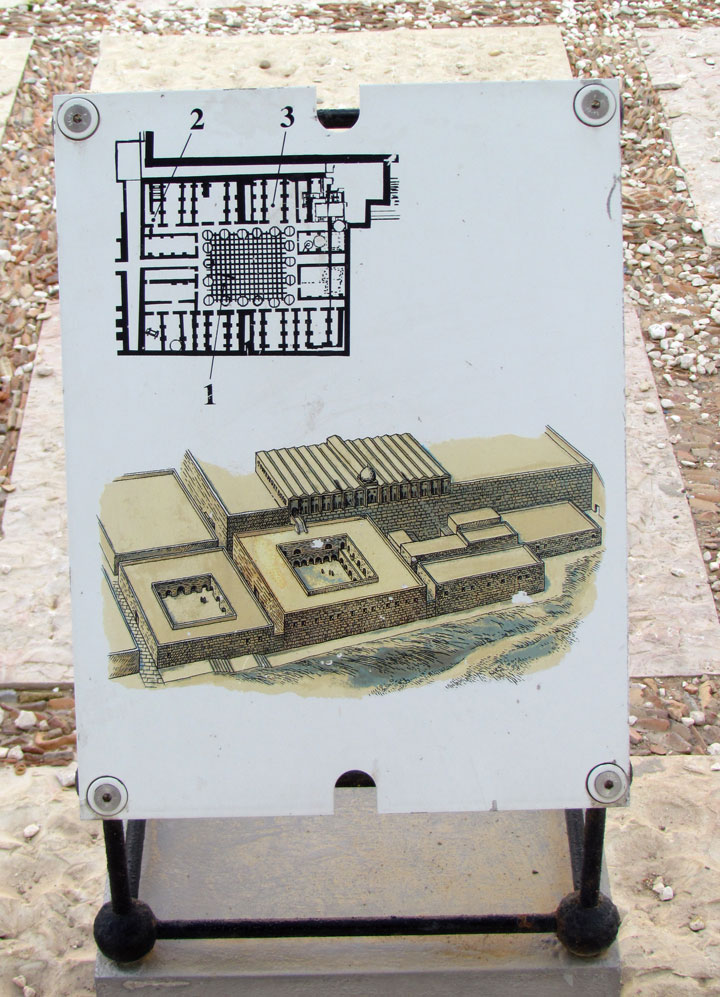
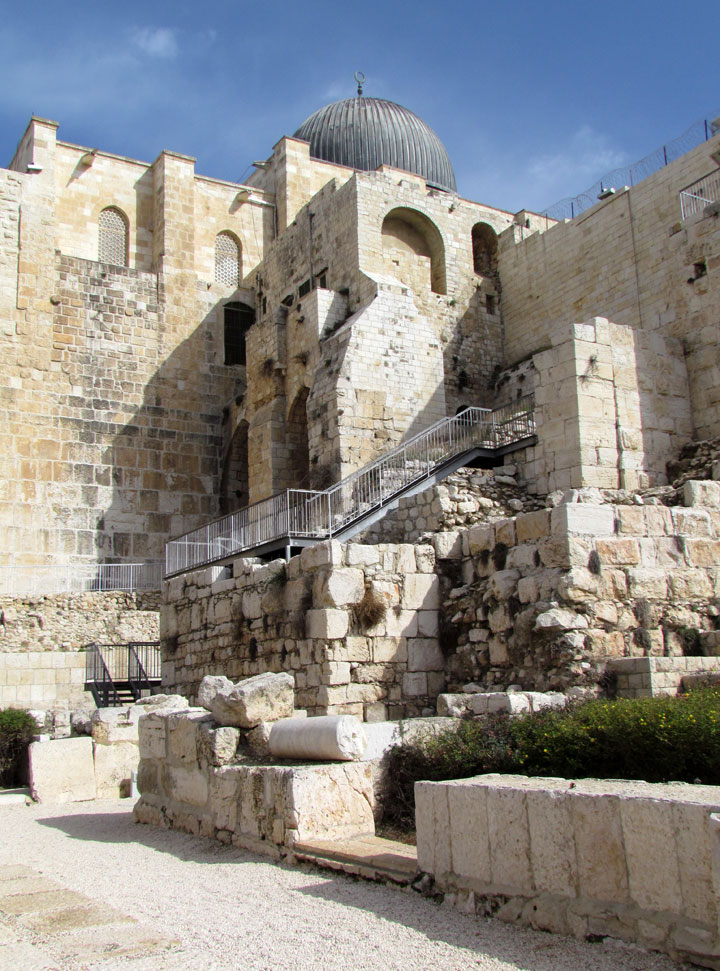
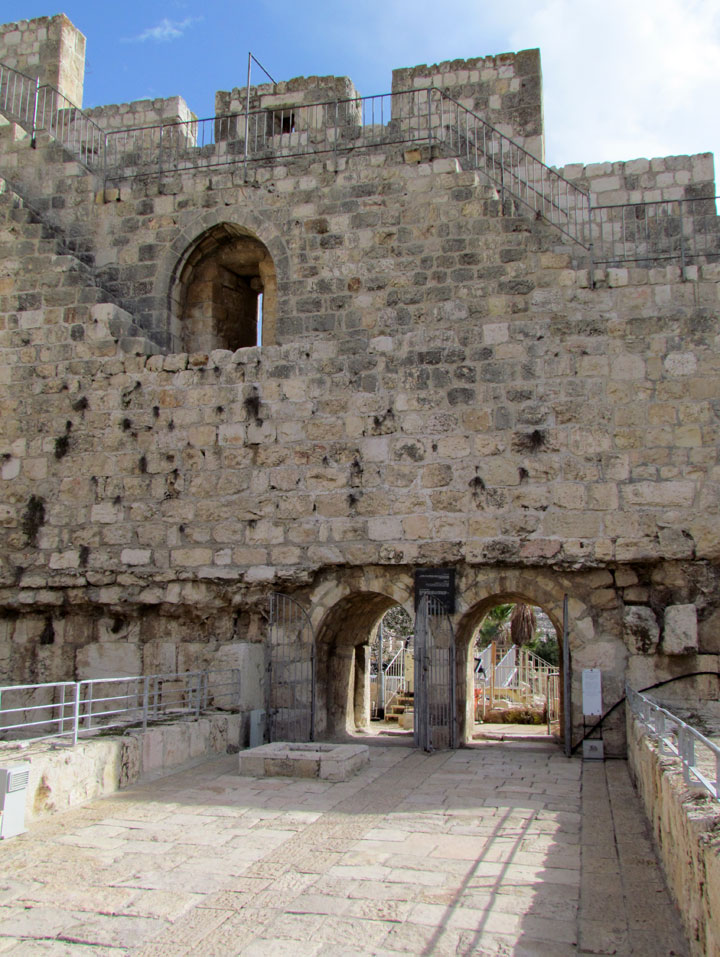
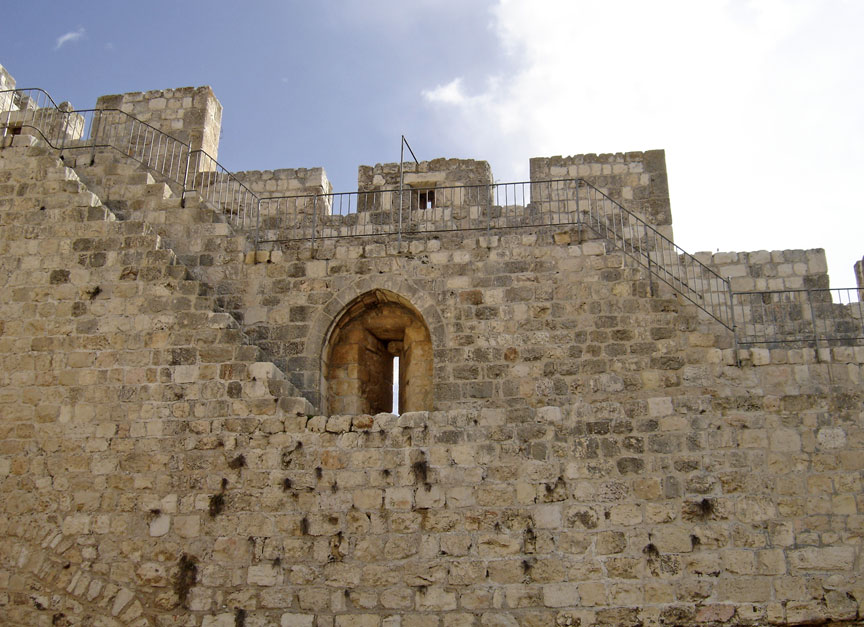
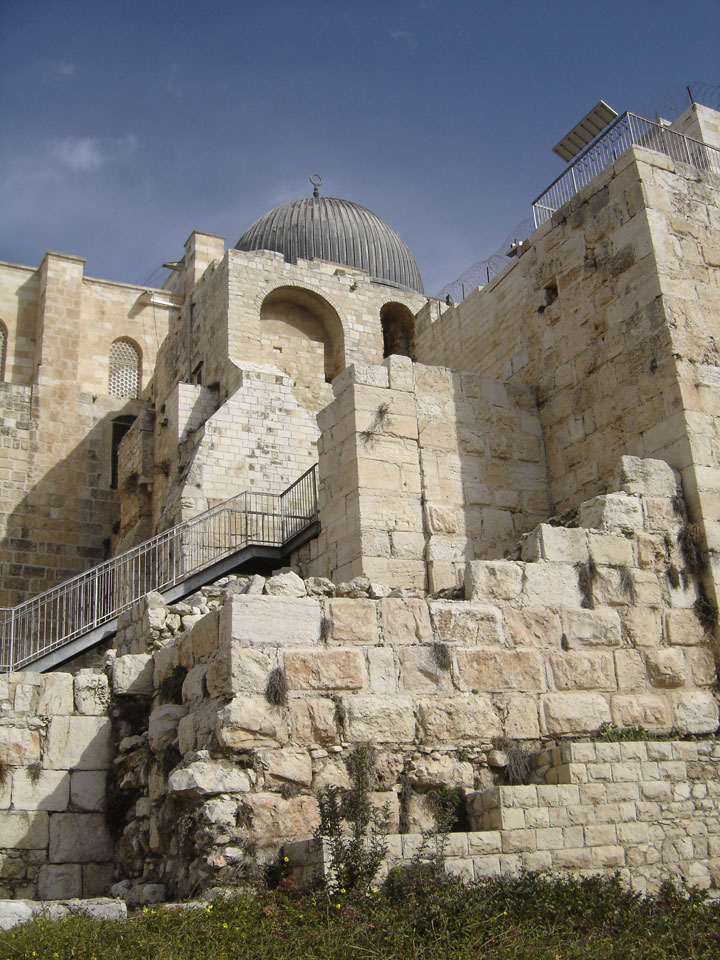
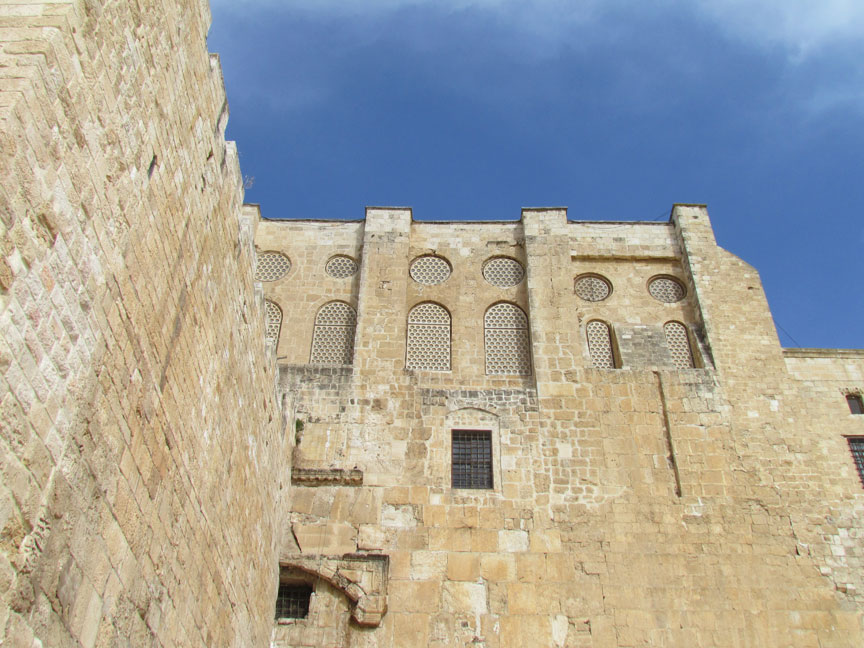
Al-Aqsa mosque

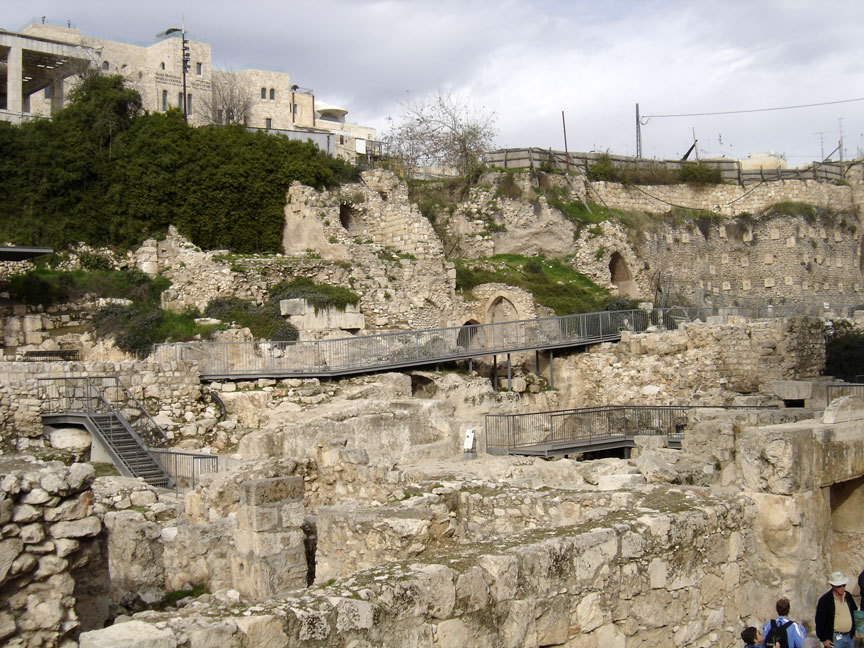

temple stairway

which Jesus used on his many visits to the temple